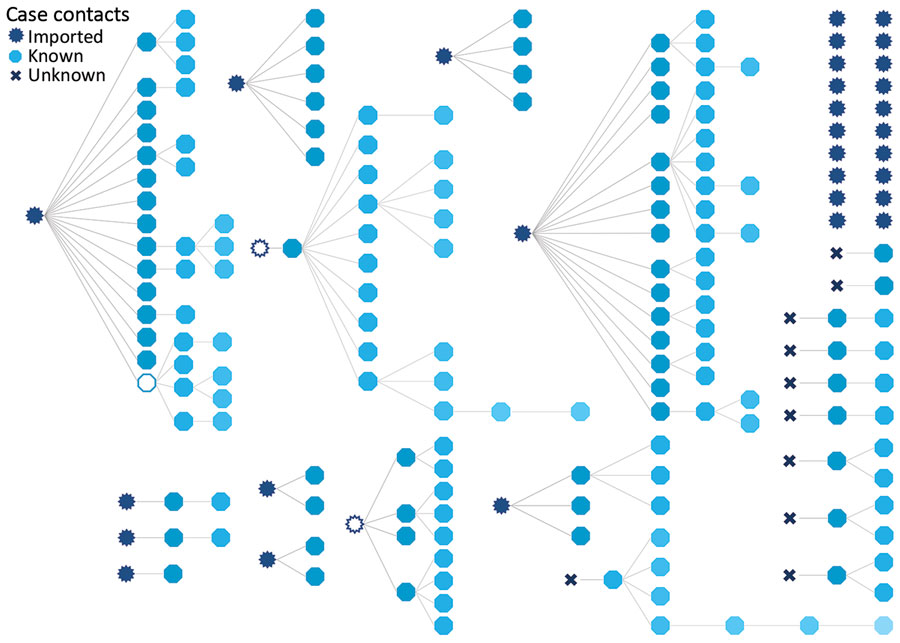Epidemiology and Clinical Course of First Wave Coronavirus Disease Cases, Faroe Islands
Marnar F. Kristiansen

, Bodil H. Heimustovu, Sanna á Borg, Tróndur Høgnason Mohr, Hannes Gislason, Lars Fodgaard Møller, Debes H. Christiansen, Bjarni á Steig, Maria Skaalum Petersen, Marin Strøm, and Shahin Gaini
Author affiliations: National Hospital of the Faroe Islands, Tórshavn, Faroe Islands (M.F. Kristiansen, B.H. Heimustovu, S. á Borg, T.H. Mohr, B. á Steig, S. Gaini); Ministry of Health COVID-19 Task Force, Tórshavn (M.F. Kristiansen, B.H. Heimustovu, B. á Steig); University of the Faroe Islands, Tórshavn (M.F. Kristiansen, H. Gislason, M.S. Petersen, M. Strøm, S. Gaini); Office of the Chief Medical Officer, Tórshavn (L.F. Møller); Faroese Food and Veterinary Authority, Tórshavn (D.H. Christiansen); The Faroese Hospital System, Tórshavn (M.S. Petersen); Statens Serum Institut, Copenhagen, Denmark (M. Strøm); Odense University Hospital, Odense, Denmark (S. Gaini); University of Southern Denmark, Odense (S. Gaini)
Main Article
Figure 3

Figure 3. Transmission chains of coronavirus disease, Faroe Islands. All transmission chains are shown but are not represented chronologically. Transmission is based on persons, not events. The 3 open symbols represent known cases that were not tested or that tested negative for coronavirus. Blue shading in hectogons denotes secondary, tertiary, and quaternary cases infected from primary case. When multiple exposures were known for a case, the first exposure was chosen as the source of infection; this choice might slightly overestimate the number of secondary cases caused some infectors. The 20 cases shown in the top right were imported and led to no further infections. Among 9 cases that originated from contact with known but untested persons or persons with negative test results (denoted by open circles), we presume the tests were false negative; those who were not tested had relevant symptoms and contact with later cases but had left the country or the course of the disease was over before their case was discovered. We classified cases that caused >10 secondary infections superspreading cases.
Main Article
Page created: January 07, 2021
Page updated: February 21, 2021
Page reviewed: February 21, 2021
The conclusions, findings, and opinions expressed by authors contributing to this journal do not necessarily reflect the official position of the U.S. Department of Health and Human Services, the Public Health Service, the Centers for Disease Control and Prevention, or the authors' affiliated institutions. Use of trade names is for identification only and does not imply endorsement by any of the groups named above.
